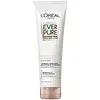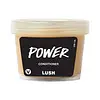What's inside
What's inside
 Key Ingredients
Key Ingredients

No key ingredients
 Benefits
Benefits

No benefits
 Concerns
Concerns

 Ingredients Side-by-side
Ingredients Side-by-side

Water
Skin ConditioningAcer Saccharum Sap
HumectantIpomoea Batatas Tuber Extract
AntioxidantCetearyl Alcohol
EmollientCetrimonium Chloride
AntimicrobialEthyl Macadamiate
Skin ConditioningPropylene Glycol
HumectantParfum
MaskingBehentrimonium Chloride
PreservativePrunus Amygdalus Dulcis Oil
Skin ConditioningHydrolyzed Wheat Protein
Skin ConditioningOlea Europaea Fruit Oil
MaskingDipteryx Odorata Bean Extract
MaskingStyrax Tonkinensis Resin Extract
PerfumingVanilla Planifolia Fruit Extract
Skin ConditioningPhenoxyethanol
PreservativeBenzyl Alcohol
PerfumingCoumarin
PerfumingEugenol
PerfumingWater, Acer Saccharum Sap, Ipomoea Batatas Tuber Extract, Cetearyl Alcohol, Cetrimonium Chloride, Ethyl Macadamiate, Propylene Glycol, Parfum, Behentrimonium Chloride, Prunus Amygdalus Dulcis Oil, Hydrolyzed Wheat Protein, Olea Europaea Fruit Oil, Dipteryx Odorata Bean Extract, Styrax Tonkinensis Resin Extract, Vanilla Planifolia Fruit Extract, Phenoxyethanol, Benzyl Alcohol, Coumarin, Eugenol
Ingredients Explained
These ingredients are found in both products.
Ingredients higher up in an ingredient list are typically present in a larger amount.
This ingredient is a preservative and often used for it's anti-static properties. You'll most likely see this ingredient in hair conditioners.
It does not cause irritation or sensitization in leave-on products at 1-5%.
Cetearyl alcohol is a mixture of two fatty alcohols: cetyl alcohol and stearyl alcohol. It is mainly used as an emulsifier. Emulsifiers help prevent the separation of oils and products. Due to its composition, it can also be used to thicken a product or help create foam.
Cetearyl alcohol is an emollient. Emollients help soothe and hydrate the skin by trapping moisture.
Studies show Cetearyl alcohol is non-toxic and non-irritating. The FDA allows products labeled "alcohol-free" to have fatty alcohols.
This ingredient is usually derived from plant oils such as palm, vegetable, or coconut oils. There is debate on whether this ingredient will cause acne.
Due to the fatty acid base, this ingredient may not be Malassezia folliculitis safe.
Learn more about Cetearyl AlcoholThis ingredient is a preservative, antimicrobial, and emulsifier. It is often used in cosmetics for its ability to cleanse, condition, and reduce static.
Cetrimonium chloride is a quaternary ammonium salt, meaning it has a water-soluble structure.
Phenoxyethanol is a preservative that has germicide, antimicrobial, and aromatic properties. Studies show that phenoxyethanol can prevent microbial growth. By itself, it has a scent that is similar to that of a rose.
It's often used in formulations along with Caprylyl Glycol to preserve the shelf life of products.
Water. It's the most common cosmetic ingredient of all. You'll usually see it at the top of ingredient lists, meaning that it makes up the largest part of the product.
So why is it so popular? Water most often acts as a solvent - this means that it helps dissolve other ingredients into the formulation.
You'll also recognize water as that liquid we all need to stay alive. If you see this, drink a glass of water. Stay hydrated!
Learn more about Water